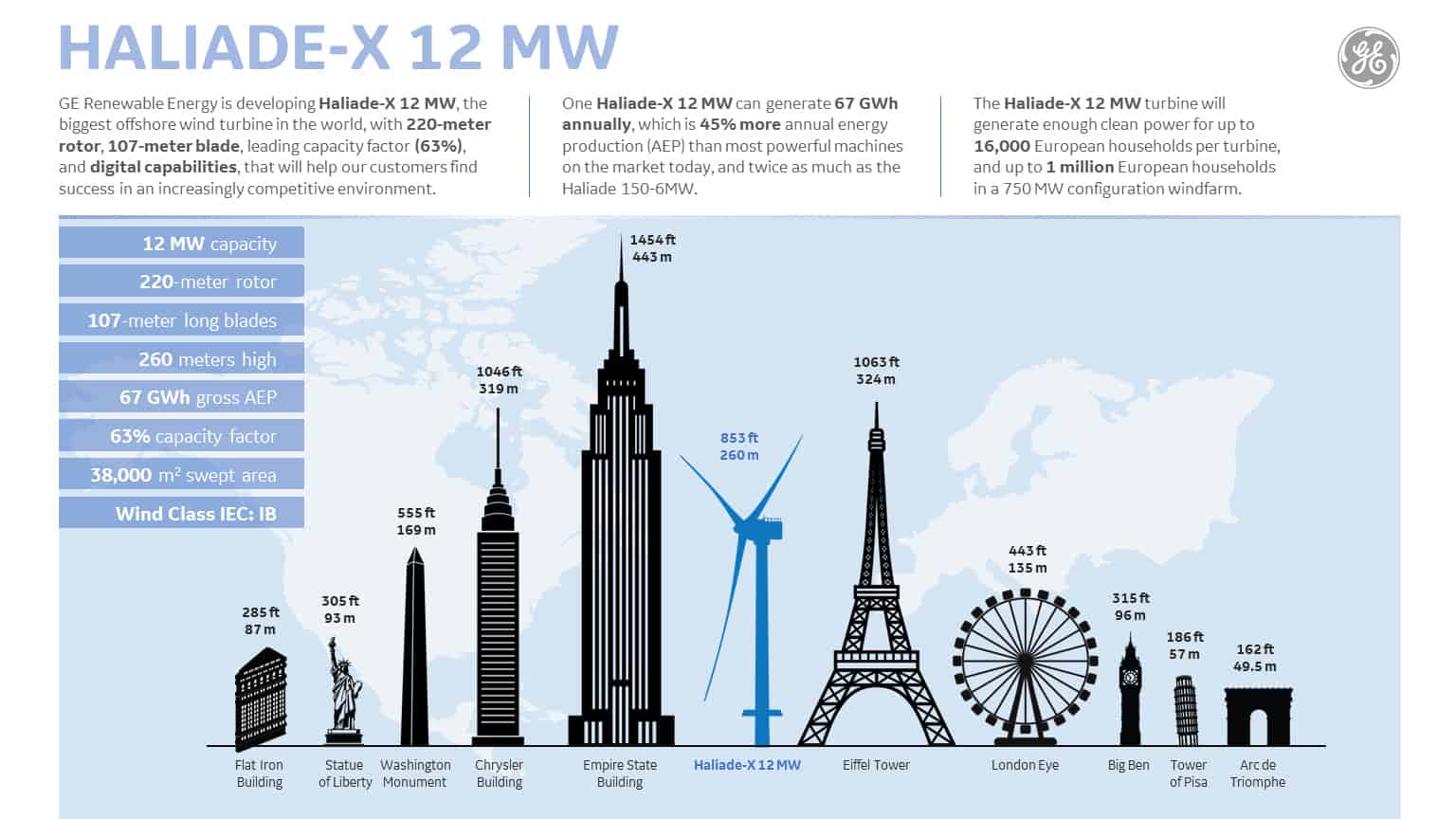GE launches world’s most powerful offshore wind turbine
Haliade-X turbine will generate 12MW with a 63 per cent capacity factor, and stands 260m tall.
The new wind turbine, whose launch was announced yesterday in Paris, will produce 45 per cent more energy than the current largest turbine available. Each unit is claimed to have the ability to produce 67GWhr of energy per year, sufficient to power up to 16,000 typical European households. Its large size will enable offshore wind farm operators to reach their power goals using fewer wind turbines, thereby reducing capital expenditure, risk in project execution and simplifying maintenance and operation.

The Haliade-X is a truly enormous beast, towering 260m above sea level. In keeping with the location of the launch, GE stated that it is five times the height of the Arc de Triomphe; British readers may not realise that the Arc de Triomphe is roughly the same height as Nelson’s Column. More comparisons with well-known buildings can be seen in the infographic above.
Each blade of the turbine is 107m long, making a total rotor diameter of 220m. The blades were designed, and will be manufactured, by LM Wind Power, a Danish blade specialist acquired by GE in 2016, which manufactures in Europe, North and South America and Asia.
Register now to continue reading
Thanks for visiting The Engineer. You’ve now reached your monthly limit of news stories. Register for free to unlock unlimited access to all of our news coverage, as well as premium content including opinion, in-depth features and special reports.
Benefits of registering
-
In-depth insights and coverage of key emerging trends
-
Unrestricted access to special reports throughout the year
-
Daily technology news delivered straight to your inbox










Water Sector Talent Exodus Could Cripple The Sector
Maybe if things are essential for the running of a country and we want to pay a fair price we should be running these utilities on a not for profit...